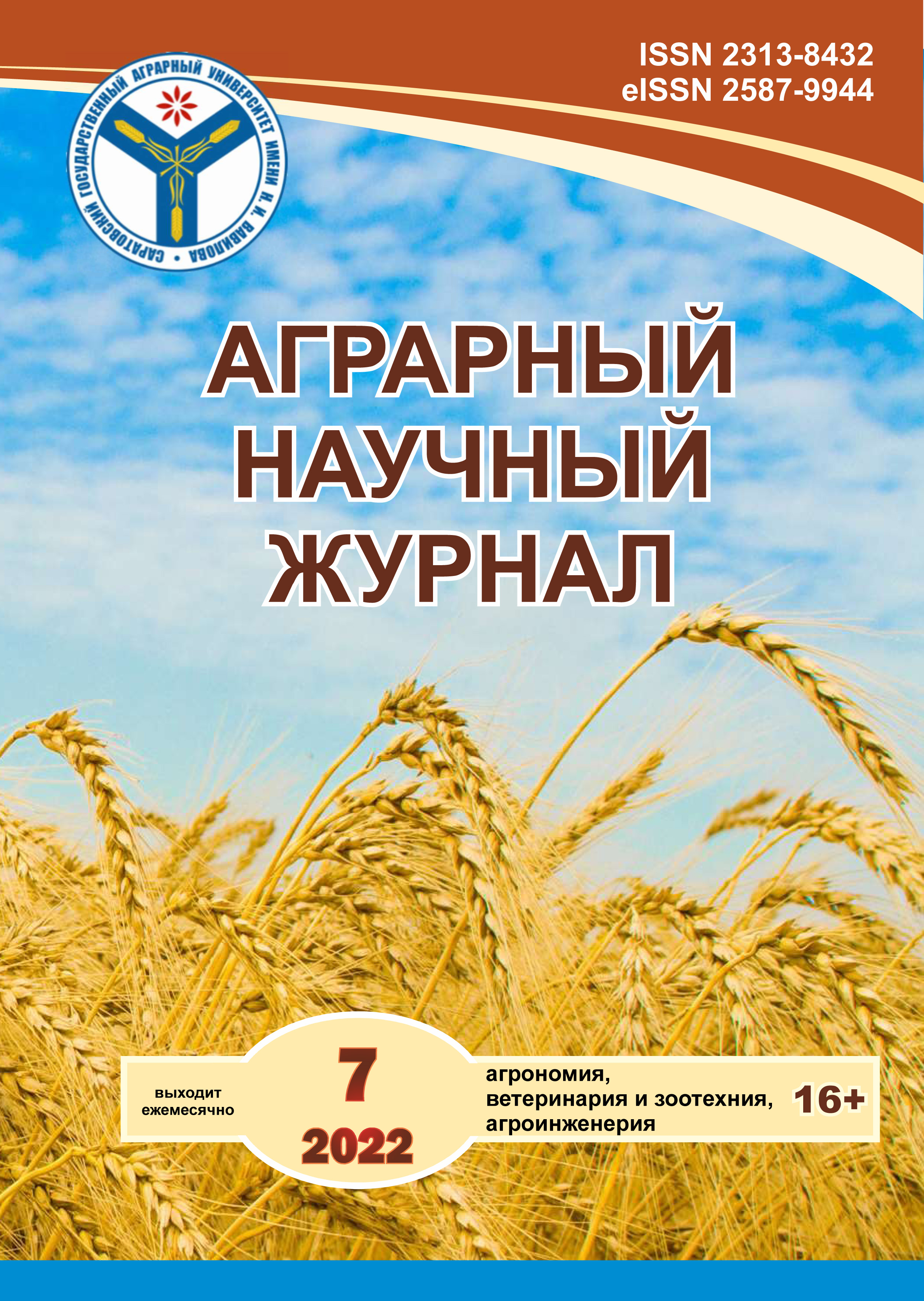The influence of paratypical factors on the reproductive qualities of black-and-white cows of different ages
DOI:
https://doi.org/10.28983/asj.y2022i7pp69-72Keywords:
service period, dry period, coefficient of reproductive capacity, cows, age of mothersAbstract
The influence of paratypical factors (the age of mothers and the season of birth) on the indicators of reproductive qualities of black-and-white cows of different age periods has been studied. The studies were conducted on two groups of cows for the first and third lactation, depending on the influence of the age of the mothers, and on four groups – depending on the influence of the birth season. The shortest service period was characterized by the first-born heifers born from mother cows in the first calving (group I) - 96.4 days, which is 9.2% shorter than in animals from mother cows in the third calving (group II). It should be noted that, despite the longer service period, the cows of the first calving of group II did not show high productivity. The cows of group II (the age of mothers – the first calving) were characterized by a higher duration of the service period - 128.1 days, which is higher than in group I by 7.4%. The first heifers of group IV (autumn period of birth) were characterized by a lower service period - 95.8 days, which is 2.6 days. (2.7%) shorter in comparison with animals of group III (summer period of birth), by 8.9 days. (9.3%) - group II (spring period of birth), on 12.3 days (12.8%) - group I (winter period of birth). A shorter service period was observed in cows of group IV (autumn period of birth) – 116.5 days. The difference in the direction of increasing the service period with animals of group I was 11.7%, group II - 10.2% and group III - 4.0%.
Downloads
References
Авдеенко А. В., Авдеенко В. С., Молчанов А. В. Воспроизводство и качество молока коров симментальской и черно-пестрой пород // Аграрный научный журнал. 2014. № 10. С. 3–5.
Вильвер Д. С., Вильвер А. С. Влияние возраста телок при первом осеменении на воспроизводительные качества коров // АПК России. 2015. Т. 73. С. 151–155.
Гриценко С. А., Белооков А. А. Особенности наследуемости хозяйственно полезных признаков у коров разных генотипов и поколений // Главный зоотехник. 2017. № 3. С. 13–20.
Гриценко С. А., Вильвер Д. С. Характеристика стада коров черно-пестрой породы по генетическим параметрам // Проблемы развития АПК региона. 2015. Т. 24. № 4 (24). С. 59–63.
Ковалева Г. П., Лапина М. Н., Сулыга Н. В., Витол В. А. Влияние некоторых паратипических факторов на воспроизводительные способности крупного рогатого скота // Известия Горского государственного аграрного университета. 2017. Т. 54. № 2. С. 93–97.
Мазилкин И. А., Шувалов А. Д., Панина О. Л. Влияние паратипических факторов на воспроизводительные способности и молочную продуктивность коров-первотелок // Аграрный вестник Верхневолжья. 2021. № 2 (35). С. 62– 67.
Федулова Д. Г., Шендаков А. И. Влияние генетических и паратипических факторов на сопроизводительные качества черно-пестрых коров // Биология в сельском хозяйстве. 2016. № 3 (12). С. 25–30.
Хачкаева Э. И., Тлейншева М. Г., Вологирова Ф. А., Тарчоков Т. Т. Воспроизводительная способность коров красно-пестрой породы // Научные Известия. 2018. № 12. С. 20–25.
Downloads
Published
Issue
Section
License
Copyright (c) 2022 The Agrarian Scientific Journal

This work is licensed under a Creative Commons Attribution-NonCommercial 4.0 International License.








